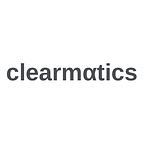Clearmatics July Debrief
Welcome to our monthly brief that will highlight what developments in the Blockchain and DLT community have been exciting us this month. We have included a short commentary on the respective articles as well as the link.
In the news this month:
Central Banks & Blockchain Technology
Clearmatics & the Bank of England’s RTGS Renewal PoC
“Clearmatics worked closely with the Bank and provided feedback on account structure and whether the renewed RTGS service can provide and consume acceptable forms of cryptographic proofs, both of which were accepted for consideration into the RTGS Renewal Programme. In order for the renewed RTGS system to interoperate with distributed systems, we believe this additional functionality within the renewed RTGS will be an important milestone to avoid the introduction of a single point of failure.”
Read more about it here.
Here are a few additional press articles:
- UK Central Bank Says New Payments System Will Be Blockchain Friendly
- Bank of England Embraces Distributed Ledger Solutions
- Bank of England tests blockchain integration
Bank of Canada
This month the Bank of Canada released several interesting papers. The first examined the impact on monetary policy of implementing a Central Bank Digital Currency (CBDC). In a second paper, the BoC looked at the Incentive Compatibility on the Blockchain and found that double-spending was unrealistic.
Stablecoin
In July, there were many articles and papers discussing Stablecoins. One that particularly caught our eye was from Clearmatics’ advisory board member Alex Lipton, whose paper “Digital trade coin: towards a more stable digital currency” was published by the Royal Society. Lipton builds on the vision of utility settlement coin and proposes an algorithmic, asset-backed currency, borderless by design. Additionally, Diar published a great table and article summarising the current Stablecoin initiatives that have found major backers.
Here are a few other Stablecoins articles that interested us:
- A brief history of Stablecoins (Part 1) — BitMEX - Bitcoin Mercantile Exchange
- Stablecoins the only real threat to government money — Hackernoon
- The State of Stablecoins 2018 — ConsenSys
- Why another Stablecoin? — Nevin Freeman
Consensus
This month, Hackernoon came out with a “Consensuspedia” highlighting 29 different popular consensus algorithms.
Ethereum’s path towards Proof of Stake consensus continued in July with the proof-of-concept eth2.0 Beacon Chain receiving a v2.1-update. We continue to be interested in the evolution of a beacon chain (backed by attestation committee signatures) being used to mitigate the risk of forking and its attack analysis in a sharded Proof of Stake chain.
In the Casper+Sharding ‘shasper’ chain v2.1 attestation committees attest to parent blocks and also confirm shard blocks back into the main chain with ‘cross linking’ signatures. For the detail of how this validator set management works across shards, see the “Beacon chain state transition function” in this WIP spec.
Privacy
Last week, Rebekah Mercer and Sarah Meiklejohn presented Mobius at PETS (Privacy Enhancing Technologies Symposium), which was covered in Coindesk’s article “Monero-Style Privacy Is Ready for Ethereum — Who Will Implement It?”. Although at the stage of proof of concept, our implementation of Mobius shows how one can leverage the determinism of smart contracts along with ring signatures to build a trust-less mixing contract on Ethereum.
We welcome feedback and contributions to our open-source implementation of Mobius here. Further documentation on Mobius can be found here:
Interoperability
One of the projects that interested us this month is Oracle Bridge, which uses a ‘portable token’ model of Interoperability to allow cross-chain transactions. In their setup, contracts exist on two EVM chains and Ether (or ERC tokens) can be escrowed and locked on a contract. A data transport layer contract is queried for the state of the escrow by ID. Tokens are then created on another chain that represent these locked funds in order to be used and spent on the other chain.
Although our approach is somewhat different, we can still learn from the underlying assumptions that led to the development of their approach and try to apply some lessons to the way we develop our own.
Read more about our Interoperability work here.
Cryptoeconomics
On the Cryptoeconomics front this month, we found this podcast particularly interesting with Vitalik Buterin discussing “Cryptoeconomics and Markets in Everything” with Tyler Cowen (Ep. 45). Read the transcript or listen to the conversation here.
Clearmatics Update
dFMI: Governing Blockchain Based Financial Market Infrastructure
We’re hiring!
Christophe MacIntosh — cmacintosh
Community Evangelist, Clearmatics
Tweet us @Clearmatics
